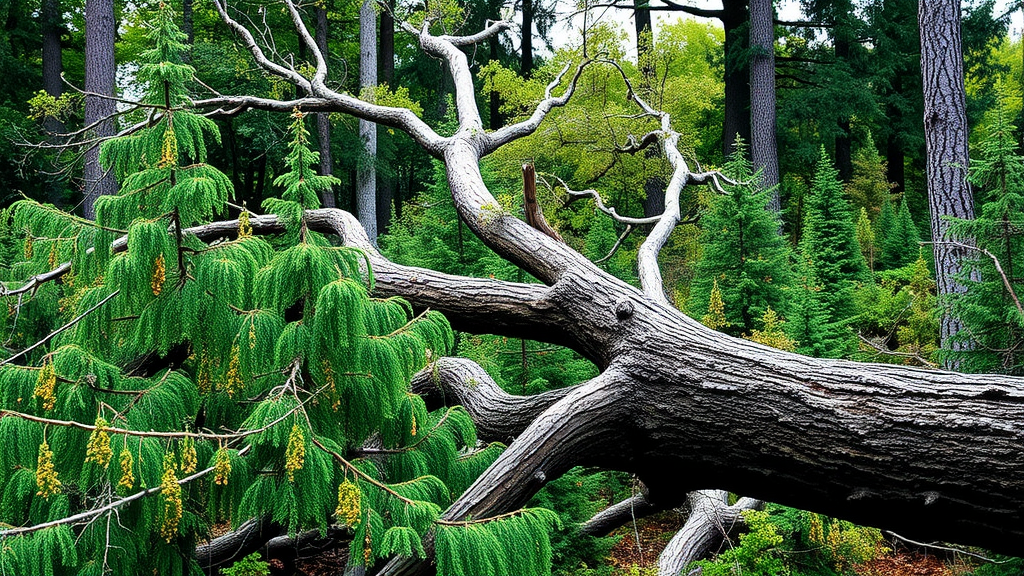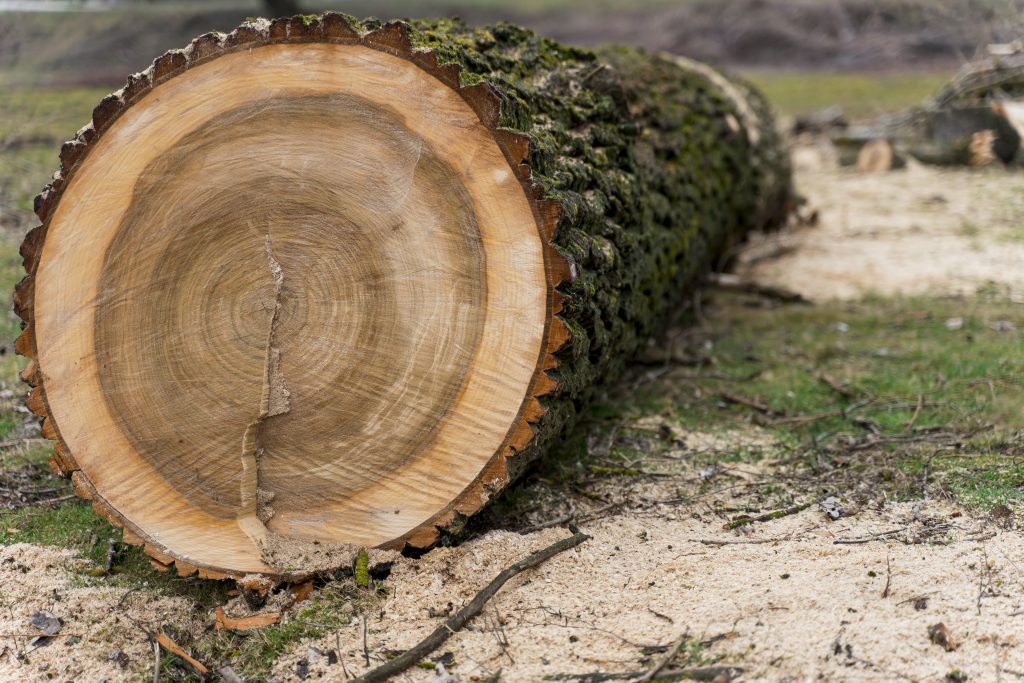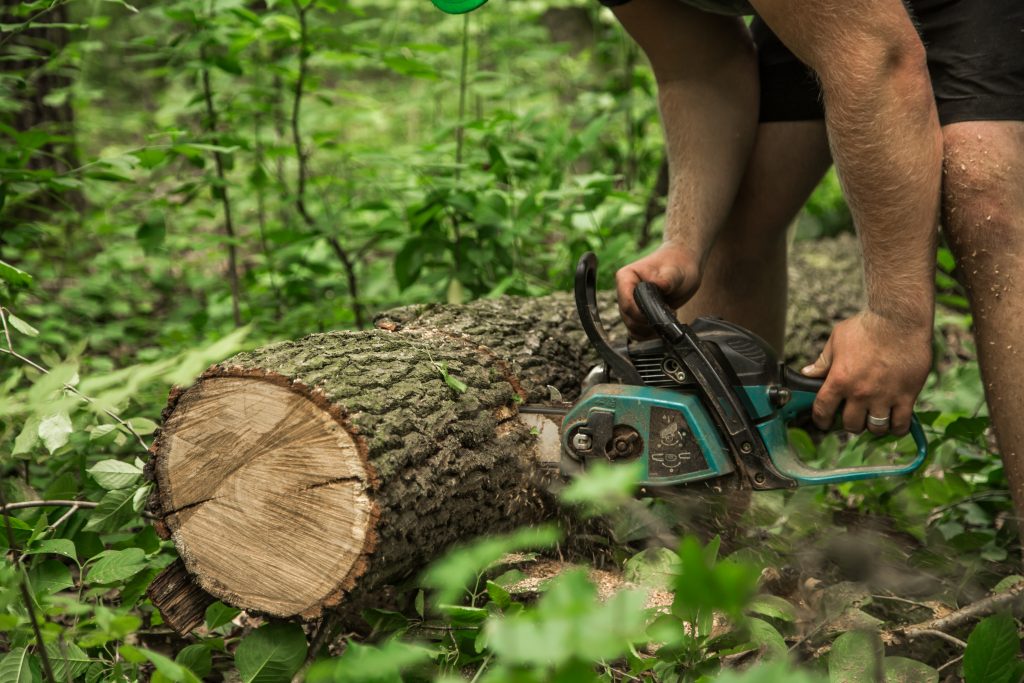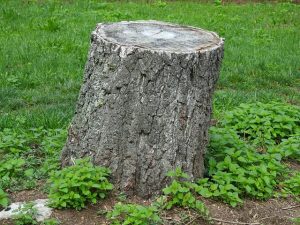Utah Stump Grinding Process And Tools


Utah Stump Grinding Process and Tools
Stump grinding is a crucial process in Utah for removing tree stumps effectively and efficiently. It is essential to use the right tools and follow a precise process to ensure the job is done correctly. In Utah, where the landscape and outdoor spaces are highly valued, stump grinding plays a significant role in maintaining the aesthetics and functionality of properties. Let’s delve into the Utah stump grinding process and the tools essential for carrying out this task.
The Utah stump grinding process involves several key steps to ensure a thorough and successful removal of tree stumps. The first step is to assess the stump and its surroundings to determine the best approach for grinding. This assessment includes considering the size of the stump, its location, and any potential obstacles that may affect the grinding process.
Once the assessment is complete, the next step is to prepare the area for stump grinding. This involves clearing any debris or obstacles around the stump that could interfere with the grinding equipment. Safety precautions should be taken at this stage to ensure the well-being of the operator and bystanders.
After the preparation is done, the actual grinding process can begin. A powerful stump grinder is used to grind the stump down to below ground level. The grinder chips away the wood bit by bit until the entire stump is reduced to wood chips and sawdust. This process requires precision and skill to ensure that the stump is ground down evenly and completely.
In Utah, it is common to use a variety of tools for stump grinding to accommodate different types and sizes of stumps. One of the primary tools used is a stump grinder, which comes in various sizes and configurations depending on the scope of the job. For larger stumps, a heavy-duty grinder with more horsepower may be required, while smaller grinders are suitable for residential or smaller projects.
Additionally, tools such as chainsaws, shovels, and safety gear are essential for the stump grinding process in Utah. Chainsaws are used to cut away any protruding roots or branches that may hinder the grinding process. Shovels are handy for clearing the area around the stump and removing any excess debris. Safety gear, including goggles, gloves, and ear protection, is crucial to protect the operator from flying debris and loud noise during grinding.
The Utah stump grinding process requires careful planning, the right tools, and skilled execution to achieve the desired results. By following a systematic approach and using appropriate tools, stump grinding can be performed efficiently and safely in Utah, contributing to the maintenance and enhancement of outdoor spaces across the state.
Importance of Proper Stump Grinding Techniques
Proper stump grinding techniques play a crucial role in the process of removing tree stumps effectively and efficiently. Utah stump grinding involves using specialized tools and following specific procedures to ensure that the job is done safely and successfully. By understanding the importance of utilizing the right techniques, homeowners and professionals can achieve optimal results in clearing their landscapes of unsightly stumps.
One of the key reasons why proper stump grinding techniques are essential is to ensure the thorough removal of the stump. When a tree is cut down, the remaining stump can cause several issues if not adequately addressed. Stumps left in the ground can attract pests, such as termites and ants, which can pose a threat to nearby plants and structures. Additionally, decaying stumps may promote the growth of fungi and mold, leading to potential health hazards. By utilizing effective stump grinding techniques, the entire stump can be safely and completely removed, mitigating these risks.
In Utah, the stump grinding process typically begins with the assessment of the stump’s size, location, and surrounding area. This evaluation helps determine the appropriate tools and equipment needed to carry out the grinding effectively. Advanced stump grinding machinery, such as stump grinders with rotating cutting disks, are commonly used to grind stumps below the ground level. These powerful tools break down the stump into small wood chips, making it easier to cover the area with soil or other landscaping materials.
How To Kill Tree Roots After Stump Removal
The grinding process itself involves systematically grinding the stump in a horizontal motion, starting from the outer edges and working towards the center. This method ensures that the entire stump is ground down evenly, leaving no protruding remnants. It is essential to maintain a consistent grinding depth to prevent any uneven patches in the landscape once the job is completed. Additionally, operators must exercise caution and wear appropriate safety gear, such as goggles and gloves, during the grinding process to prevent injuries.
To facilitate the stump grinding process in Utah, various tools and equipment are utilized to achieve efficient and precise results. Stump grinders come in different sizes and configurations, ranging from handheld grinders for smaller stumps to self-propelled machines for larger, more challenging jobs. Some stump grinders are equipped with adjustable cutting heights, allowing operators to control the depth of the grinding based on the stump’s size and the desired outcome.
In addition to stump grinders, other essential tools used in the grinding process include safety gear, such as ear protection and steel-toed boots, as well as shovels and rakes for clearing the area post-grinding. Proper maintenance of the equipment is also crucial to ensure smooth operation and prevent any delays during the grinding process. By investing in high-quality tools and following best practices for stump grinding, individuals can achieve professional results and enhance the overall appearance of their landscape.
Proper stump grinding techniques are vital for effective stump removal in Utah. By utilizing the right tools, following best practices, and prioritizing safety, homeowners and professionals can successfully eliminate tree stumps and rejuvenate their outdoor spaces. With a focus on precision and thoroughness, the stump grinding process can be completed efficiently, leaving behind a clean and clear landscape free of unsightly remnants.
Understanding Safety Measures in Stump Grinding
Stump grinding is a common technique used to remove tree stumps from the ground after a tree has been cut down. This process involves using special tools and equipment to grind the stump into small wood chips, making it easier to remove or cover up. In Utah, the stump grinding process is carried out by professionals who follow specific safety measures to ensure the job is done efficiently and without any accidents.
One of the key safety measures in stump grinding is wearing the appropriate protective gear. This includes eye protection, gloves, ear defenders, and steel-toe boots. Since stump grinding involves heavy machinery and sharp blades, it is essential for workers to protect themselves from flying debris and loud noise. Additionally, wearing the right gear reduces the risk of injuries and accidents on the job site.
Before starting the stump grinding process in Utah, it is crucial to assess the site for any potential hazards. This includes checking for underground utilities, rocks, or other obstacles that could interfere with the grinding equipment. By conducting a thorough inspection of the area, professionals can plan the stump grinding process effectively and avoid any damage to property or equipment.
When it comes to the actual stump grinding process, using the right tools is essential for safety and efficiency. In Utah, professionals typically use stump grinders, which are powerful machines specifically designed for grinding tree stumps. These machines have special rotating blades that grind the stump into small wood chips, making it easier to remove or cover up. By using the appropriate tools, professionals can complete the stump grinding process quickly and effectively.
In addition to wearing protective gear and using the right tools, another safety measure in stump grinding is maintaining a safe distance from the grinding equipment. Stump grinders have powerful motors and sharp blades that can cause serious injuries if proper precautions are not taken. Professionals in Utah are trained to operate the equipment safely and ensure that bystanders stay away from the grinding area to prevent accidents.
How To Kill Tree Roots After Stump Removal
Furthermore, following proper safety guidelines and regulations is essential during the stump grinding process. In Utah, professionals are required to adhere to industry standards and safety protocols to ensure the job is done correctly and without any incidents. By staying informed about safety regulations and receiving proper training, professionals can minimize risks and ensure a safe working environment.
Safety measures in stump grinding are essential to protect workers, property, and bystanders during the removal of tree stumps. By wearing protective gear, assessing the site for hazards, using the right tools, maintaining a safe distance, and following safety guidelines, professionals in Utah can safely and efficiently complete the stump grinding process. Remember, safety should always be the top priority when it comes to stump grinding operations.
Environmental Impact of Stump Grinding Practices
Stump grinding is a common practice in Utah and other regions to remove tree stumps from the ground after a tree has been cut down. While stump grinding is an effective way to clear landscapes for new construction or landscaping projects, it is essential to consider the environmental impact of this practice. By understanding the environmental implications of stump grinding, individuals and companies can implement strategies to minimize any negative effects on the ecosystem.
One of the primary environmental impacts of stump grinding is the potential disruption of soil structure and composition. When a stump is ground down, the process can disturb the surrounding soil, leading to compaction and disruption of beneficial microorganisms and nutrients. This disturbance can have a lasting impact on the health of the soil and the ability of plants to thrive in the area.
Additionally, the equipment and tools used in the stump grinding process can have environmental consequences. The machinery required for stump grinding typically runs on gasoline or diesel fuel, contributing to air pollution and carbon emissions. It is important for operators to maintain and service their equipment regularly to minimize emissions and environmental impact.
To mitigate the environmental impact of stump grinding, there are several strategies that can be implemented. One approach is to use eco-friendly stump grinding equipment that runs on electric power instead of fossil fuels. Electric grinders produce fewer emissions and have a reduced environmental footprint compared to traditional gasoline-powered equipment.
Another strategy is to utilize the wood chips and mulch produced during the stump grinding process in a sustainable manner. Instead of disposing of the wood waste in landfills, the wood chips can be recycled and used for landscaping, erosion control, or as a natural mulch. This not only reduces waste but also provides a sustainable solution for reusing the organic material.
Furthermore, practicing responsible stump grinding techniques can help minimize the environmental impact. By carefully planning the stump grinding process, operators can avoid unnecessary damage to the surrounding vegetation and soil. It is important to assess the site conditions beforehand and take measures to protect nearby plants and wildlife during the grinding operation.
While stump grinding is a necessary practice for land clearing and tree removal projects, it is crucial to consider the environmental impact of this process. By adopting eco-friendly equipment, reusing wood waste, and implementing responsible grinding techniques, individuals and companies can lessen the environmental footprint of stump grinding activities. By prioritizing the health of the ecosystem, we can ensure a sustainable approach to stump removal in Utah and beyond.
Tips for Choosing the Right Stump Grinding Service
Stump grinding is a crucial step in landscaping and tree removal processes. When dealing with stumps in Utah, it’s essential to understand the stump grinding process and the tools involved. Choosing the right stump grinding service can make a significant difference in the outcome of your project. Here are some essential tips to consider when selecting a stump grinding service in Utah.
How To Kill Tree Roots After Stump Removal
Research Local Providers
Start by researching local stump grinding service providers in Utah. Look for companies with a good reputation, positive reviews, and experience in handling different types of stumps. Local companies are often more familiar with the terrain and specific challenges that come with Utah landscapes.
Check Credentials and Insurance
Before hiring a stump grinding service, make sure to check their credentials and insurance. A reputable company should have proper licensing and insurance to protect you from any liability in case of accidents or property damage during the stump grinding process.
Evaluate Equipment and Tools
The quality of equipment and tools used by a stump grinding service is crucial for the success of the project. Make sure the company you choose has modern and well-maintained stump grinders that are suitable for the size and type of stumps you need to remove. The efficiency of the equipment can impact the duration and outcome of the grinding process.
Request a Cost Estimate
Get a detailed cost estimate from the stump grinding service before starting the project. The estimate should include a breakdown of the costs, such as labor, equipment rental, and any additional services. Compare quotes from multiple providers to ensure you are getting a fair price for the stump grinding service.
Consider Environmental Impact
When selecting a stump grinding service in Utah, consider the environmental impact of the process. Ask the company how they handle the disposal of stump grindings and whether they use eco-friendly practices. Minimizing environmental impact should be a priority when choosing a service provider.
Get a Written Contract
Once you have selected a stump grinding service, make sure to get a written contract detailing the scope of work, timeline, cost, and any warranties or guarantees. A contract helps protect both parties and ensures that the project is completed according to your expectations.
Ask for Recommendations
If you’re unsure where to start, ask for recommendations from friends, neighbors, or local landscaping professionals in Utah. Personal recommendations can help you find a reliable and trustworthy stump grinding service with a proven track record.
Choosing the right stump grinding service in Utah requires careful consideration of factors such as credentials, equipment, cost, and environmental practices. By following these tips, you can make an informed decision and ensure a successful stump grinding process.
Key Takeaway:
When it comes to Utah Stump Grinding Process and Tools, it is crucial to understand the importance of employing proper techniques. Stump grinding is a necessary step in tree removal processes, and using the right tools is essential for a successful outcome. By delving into the significance of utilizing the correct equipment and methods, one can ensure efficient removal of tree stumps while minimizing potential hazards and environmental impact.
How To Kill Tree Roots After Stump Removal
Proper stump grinding techniques play a pivotal role in achieving satisfactory results. From selecting the appropriate grinding tools to understanding the process intricacies, each step contributes to the overall success of the stump removal project. By emphasizing the significance of adhering to best practices, individuals can avoid common pitfalls associated with improper stump grinding methods and ensure a seamless execution of the task.
Safety measures in stump grinding cannot be overstated. It is imperative to prioritize safety precautions to prevent accidents and injuries during the stump removal process. By following industry-standard safety protocols, such as wearing appropriate protective gear and conducting a thorough site assessment, individuals can mitigate risks and promote a secure working environment for all involved.
Moreover, the environmental impact of stump grinding practices is a critical aspect to consider. By opting for environmentally friendly techniques and equipment, individuals can minimize disturbances to surrounding ecosystems and uphold sustainability principles. Embracing responsible stump grinding practices not only benefits the environment but also reflects a commitment to preserving natural habitats for future generations.
When selecting a stump grinding service, it is essential to consider various factors to ensure a seamless experience. From evaluating the service provider’s expertise and equipment quality to researching customer reviews and obtaining cost estimates, thorough due diligence can help individuals choose the right stump grinding service that meets their specific requirements.
By underscoring the Utah Stump Grinding Process and Tools, highlighting the importance of proper techniques, emphasizing safety measures, acknowledging the environmental impact, and offering tips for selecting the right service, individuals can navigate the stump removal process effectively and responsibly. Prioritizing these key aspects will lead to successful outcomes while promoting sustainability and safety in stump grinding practices.
Conclusion
The process of stump grinding in Utah involves using specialized tools and equipment to effectively remove tree stumps from the ground. By employing proper stump grinding techniques, individuals can ensure that the job is done efficiently and safely. Understanding the importance of safety measures in stump grinding is crucial to prevent accidents and injuries. Additionally, being mindful of the environmental impact of stump grinding practices can help preserve the ecosystem and promote sustainability.
When it comes to choosing the right stump grinding service, there are several factors to consider. It is essential to research the reputation and experience of the service provider to ensure quality work. Asking for recommendations from friends or neighbors can also help in finding a reliable stump grinding service. Moreover, obtaining multiple quotes and comparing services can aid in selecting a provider that offers competitive pricing and meets specific requirements.
Always prioritize safety when engaging in stump grinding activities. Wearing proper protective gear, such as goggles, gloves, and steel-toed boots, can help prevent injuries. It is crucial to follow manufacturer’s instructions when operating stump grinding tools and equipment to avoid accidents. By taking adequate safety precautions, individuals can ensure a smooth and accident-free stump grinding process.
Stump grinding not only enhances the aesthetic appeal of a property but also promotes the health of surrounding vegetation. By effectively removing tree stumps, property owners can prevent the spread of diseases and pests that may affect other plants. Stump grinding also eliminates tripping hazards and creates more usable space in outdoor areas. investing in stump grinding services can improve the overall appearance and functionality of a landscape.
How To Kill Tree Roots After Stump Removal
The Utah stump grinding process involves using specialized tools and techniques to remove tree stumps effectively. Prioritizing safety, understanding the environmental impact, and selecting the right stump grinding service are essential aspects to consider. By following proper stump grinding practices, individuals can ensure a successful and efficient stump removal process that benefits both the property and the environment.
If you need a tree service in Utah, you can call:
Truco Services, Inc.
4640 Commerce Drive
Murray, Utah 84107
(801) 466-8044
https://truetreeservices.com/







